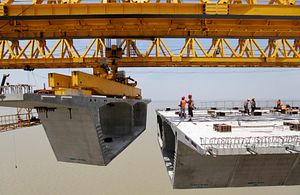When the Asian Development Bank (ADB) was set up nearly half a century ago to promote economic development across the continent, not even the greatest optimists could have dreamt of the scale of change and rate of progress we have seen. After all, in 1966, Vietnam was the scene of a terrible conflict. China was firmly outside the global economy. The Soviet Union and the West were still locked in the Cold War. Japan was the only major economic power in the region. Hundreds of millions of people were seemingly trapped in poverty.
As finance ministers, central bank governors, and industry leaders gather in Astana, Kazakhstan, for the ADB’s annual meeting, the picture could hardly be more different or more positive. It is peace, prosperity and potential which are the hallmarks of Asia in the 21st century.
China, the world’s second biggest economy, is driving global growth. India, Indonesia and South Korea have joined China and Japan in the G20 group of largest economies. Growth is strong across the continent with millions lifted out of poverty. Asia now produces up to 30 percent of the world GDP and its share is expected to reach 50 percent by 2050.
Kazakhstan, which did not exist as an independent country even a generation ago let alone when the ADB was established, is an example of the speed of change and direction of travel. Born out of the break-up of the Soviet Union, it is already among the 50th biggest global economies with dramatic improvements in living standards for its citizens.
But despite this remarkable progress and predictions that this will be the “Asian Century,” the continent still faces many challenges. Not all countries, nor all parts of society, have shared in the fast pace of development. Asia remains home to two thirds of the world’s poor. Afghanistan is one of a number of countries still struggling with conflict.
We are also seeing the rapid pace of development putting increasing pressure on societies and resources. Kazakhstan itself is working hard to rebalance its economy away from its natural resource wealth to build a successful and resilient future.
Delivering this goal for Kazakhstan and Asia as a whole – and making sure all countries and sections of society share in this prosperity – depends critically on improved regional economic integration. And this can’t be achieved without tackling the barriers that prevent the flow of trade across our continent and to the wider world.
It is why the decision by the ADB to focus this year’s annual meeting on improving physical links – transport and infrastructure – is so important. At the heart of this strategy is the New Silk Road, which will enable trade to flow easily east and west just as it did centuries ago.
China’s President Xi Jinping last year underlined the crucial role this development will play in spreading prosperity. He outlined his vision for an economic belt from the Pacific Ocean to the Baltic Sea, representing a market of unparalleled size and potential. This new Silk Road would help spread prosperity across the continent and give hope to countries like Afghanistan.
With the withdrawal of international forces at the end of this year, economic prosperity and opportunity will be critical to building a stable Afghanistan. The development of regional infrastructure can help integrate and open up the country to Asia’s growth.
Today, initiatives are already underway to strengthen connectivity and trade along this ancient route. New mega-projects, such as the Western China-Western Europe highway, which goes through Kazakhstan, will cut 45 days off delivery times between China and Europe. As part of this, Kazakhstan is upgrading more than 2,700 km of road in the south of the country to help reduce transport times and cut costs.
Such large-scale projects involve long-term vision and cross-regional cooperation. They are built on shared ambitions and strong bilateral partnerships. Kazakhstan’s relationship with China is an example of one of the building blocks in place.
Chinese-Kazakh trade has been growing strongly and is expected to reach $40 billion by 2015. Our two countries are increasingly cooperating on cross-border energy and transport projects whose positive impact will be felt far beyond our borders.
But right across the continent, we need to find the confidence and courage to work together to remove barriers, whether physical or invisible, to trade and cooperation. We have the goal of joining the world’s top 30 economies – the core objective of our Kazakhstan 2050 development strategy. But we know we cannot achieve this alone.
The ADB will be critical in realizing this bold ambition, through its work both within Kazakhstan and across Central Asia, where projects on water, energy, poverty reduction and business development – among many others – are confronting issues that directly impact the security and stability of the region. Kazakhstan intends to continue and grow its support for the ADB and act as a reliable partner in its important work throughout the region.
It is why we hope the ADB this week in Astana will add renewed energy to efforts to improve cooperation and connectivity within and beyond Asia. It is key to accelerating growth, raising productivity and unlocking the continent’s vast potential.
The author is the Minister of Foreign Affairs of Kazakhstan.
































